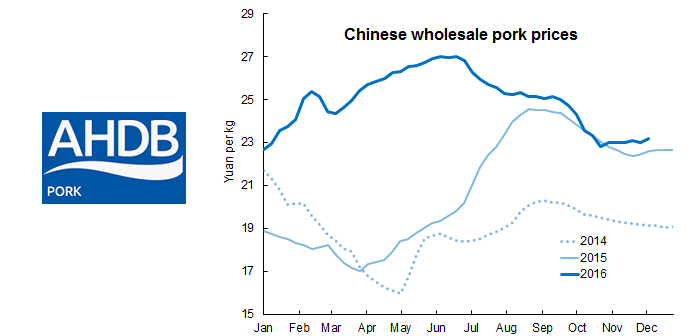China will continue to be a key market to watch next year from a global pig trade perspective with imports into the country being seen by AHDB Pork as “likely to continue playing an important role” in 2017 and beyond.
Commenting as part of a new analysis of production and import prospects for pigmeat in China, AHDB Pork also warns, however, that the extent of the country’s future importance as a destiny for imported pork will depend on how successful the Chinese government is in implementing its desired industry restructure and how much the country is able to increase pork production.
“In the past 18 months, China has become an increasingly important destination for global pigmeat exports,” said AHDB Pork, pointing out that with Chinese imports more than doubling so far this year, the USDA is anticipating that volumes will reach a record 2.4 million tonnes (carcase weight equivalent) in 2016.
Posing the big follow-on question of how long this level of trade will continue, however, AHDB Pork explores several influencing factors, including the Chinese government’s aim of modernising the country’s pig sector by 2020; moving away from small/medium-sized, family-run production units and promoting the establishment of much larger operations, while also investing in technical and genetic advances.
The analysis also examines the Chinese government’s goal of decreasing the environmental impact of pig production, partly by controlling where farms can be located and by introducing new waste disposal regulations.
In the midst of such issues, the Chinese Meat Association is reported to be estimating that the country’s meat consumption will reach 100 million tonnes by 2020, with pork accounting for two thirds of that total.
“This could push domestic pork consumption in China to 67 million tonnes,” added AHDB Pork. “With target production at only 55 million tonnes, a seemingly impossible 12 million tonnes would need to be imported to meet demand.
“While these figures are unlikely to reflect reality, they do highlight that opportunities for exporters may continue to be plentiful.”




